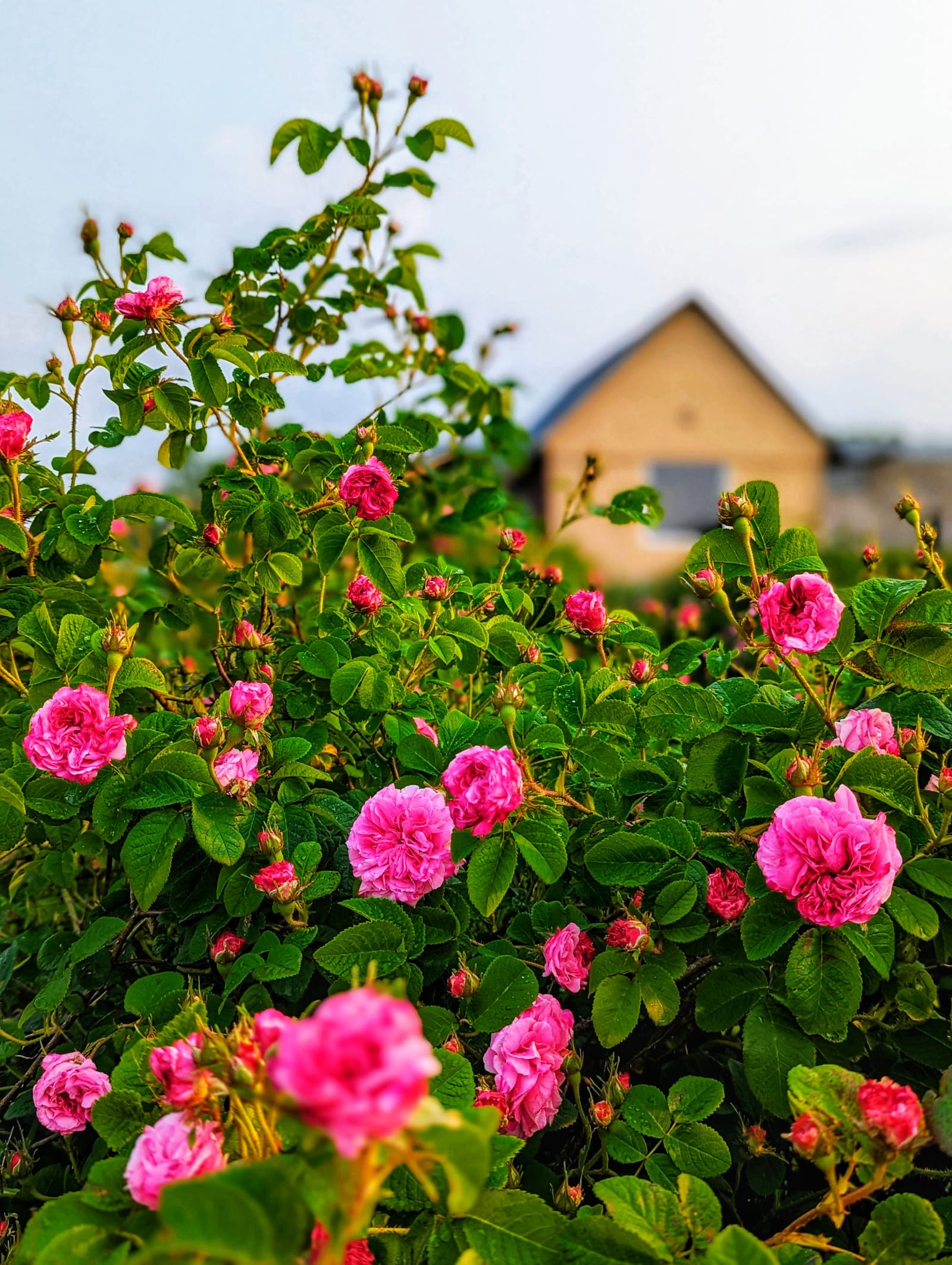
"to damascus, years are only moments, decades are only flitting trifles of time. she measures time not by days, months and years, but by the empires she has seen rise and prosper and crumble to ruin." mark twain, 1860
from the beginning of time
the dna of every damask rose can be traced back to the ancient city of damascus. it was in this cradle of civilization that the damask rose became deeply entwined with syrian culture and today little has changed in the traditional cycle of growth/harvest/preservation of this revered species. generation after generation of small family farms have devoted their energy into the cultivation of damask rose and a sophisticated global market supports their hard work and achievements. for the last dozen years or so, syria has been in a 'crumble to ruin' phase of her empire cycle and migration/war has decimated damask rose production. preserving damask rose is of utmost importance as the well-researched health benefits make it a highly valuable crop.
damask rose, 0-2022
imagine, throughout all known history, no plant has been more coveted than rosa × damascena and that's just a cold hard fact. over the centuries, damascus was powerless to stop 'outsiders' from discovering and then spreading the word of the fabled damask rose. the road leading to this legendary city is deeply scored by travelers like us who are seeking an encounter with this treasured flower. a heavenly fragrance, astounding healing properties, a vast mystical shroud ... the oldest civilization on earth is deeply enmeshed in the dna of every damask rose
the science of damask rose dna
clearly, the damask rose's history and culture provides great allure but what is it about its bio-chemical composition that scientifically proves its superiority? when we say that damask rose contains more compounds than any plant on earth it's important to know the criteria from which this conclusion is drawn.
the key 'actives' found in damask rose are deeply beneficial to people and modern-day science can now provide some insight into the unique plant chemistry contained within the petals and why it is so good for the human body. very specific and wide-ranging data exists about the microscopic components contained within the damask rose flower. measurable attributes that optimize how the human body functions are in such abundance and are so useful in so many different situations. the case for 'traditional knowledge', which saw damask rose successfully employed as a medicine for centuries, keeps getting stronger and stronger with every study conducted! here are a few of the ridiculously helpful compounds that are found within the damask rose dna in ridiculously high concentrations:
terpenes: are the active chemical compounds responsible for flavour, colour and scent. when active in the plant, terpenes help plants defend themselves against disease and insects. when active in a topical preparation, they show great activity as a penetration enhancer.
flavonoids: are found in fruits, vegetables, grains, bark, roots, stems and flowers. flavonoids cover a broad range of biological activity within the plant such as: attracting pollinating insects, combatting environmental stresses and regulates cell growth. in a topical/cosmetic application, flavonoids are indispensable for their anti-oxidative, anti-inflammatory, anti-mutagenic and anti-carcinogenic properties coupled with their capacity to modulate key cellular enzyme functions.
anthocyanins: are a type of flavonoid that produces the water-soluble pigment colours red, purple, and blue - in other words, anthocyanins are what make blueberries blue and damask roses densely pink. we all know how important it is to include 'colourful' fruits and vegetables to our diets well, similarly, anthocyanins in a topical preparation provide health-promoting active ingredients to the skin.
pov: vauxhall gardens grimsby
in our experience, the damask rose is a trouble-free/high-value crop. a hard pruning is required in late winter/early spring and an intense 3-4 weeks of harvesting/processing in early summer are the main periods we give our collection our undivided attention. we have about 50 damask rose bushes which are 15 years old. we grow the kazanlik rose as well as a damask rose called 'marie louise' that we got from an old estate of a rose lover from british columbia. there is also 6 bushes of 'duc de cambridge' which, when dried, turns a beautiful ruby-black. this year, the roses harvested from the 'duc de cambridge' were dried seperately and will be used in bath sachets.
chemical management is something we don't even think about around here and yet our collection thrives. with what we've learned here, you will be able to answer our parting question with ease ... our damask roses grow so strongly and bug-free without any intervention because a) they grow in a well-drained, sunny location with always a breeze present, b) they are so intensely happy that they are kicking out mega terpenes and have their own natural 'sheild', c) their history and dna share a centuries old boldness and strength of character, or d) all of the above?
thank you for your interest and support of #ontariogrown damask roses
dam·ask rose
/ˈdaməsk rōz/
damask rose: a sweet-scented rose of an old variety (or hybrid) that is typically pink or light red in colour. the petals are soft and velvety and are used to make attar
damask daydreams: the reverie that commences when the first damask rose bud breaks and continues for the brief but intense 3-4 weeks of harvesting












